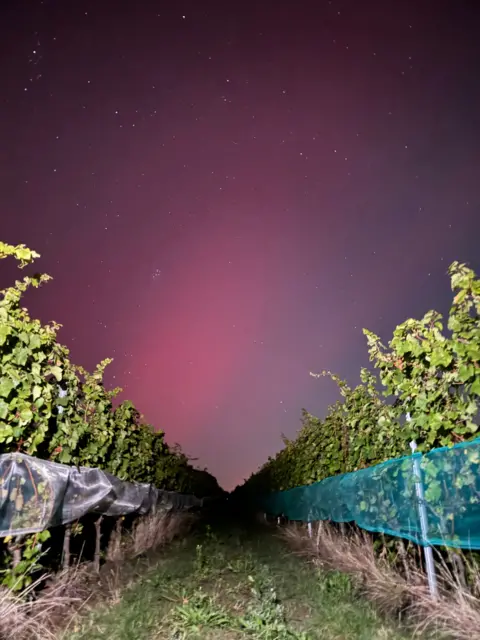 Cloudyapple/BBC Weather Watchers
Cloudyapple/BBC Weather WatchersThe Northern Lights have splashed vivid colour across UK night skies once again, with stunning images captured all across the country.
The lights, also known as aurora borealis, were expected to be seen only as far south as the Midlands, but on Wednesday night, according to BBC Weather was the strongest and most widespread showing of the phenomenon in the UK since May.
As solar activity weakens, it might still be possible for those in some Northern areas to see the lights on Friday, but elsewhere, the chances are low.
 Cat Lloyd
Cat LloydAurora displays occur when charged particles collide with gases in the Earth's atmosphere around the magnetic poles.
As they collide, light is emitted at various wavelengths, creating colourful displays in the sky.
The auroras are most commonly seen over high polar latitudes, and are chiefly influenced by geomagnetic storms which originate from activity on the Sun.
 Carroll Weston
Carroll Weston Alan Forrest
Alan ForrestThe UK has seen more of the Northern Lights in 2024 than in many recent years.
Increased UK sightings have been helped by the Sun reaching a "maximum" in it's 11-year solar cycle.
During this maximum, the number of sunspots increases which leads to more Coronal Mass Ejections sending charged particles to Earth, creating the aurora.
With overall high activity on the Sun with lots of sunspots, there is a high chance we'll get more of these Coronal Mass Ejections directed to Earth in the coming months.
 Cloudyapple/Weather Watchers
Cloudyapple/Weather Watchers Steve Hubbard
Steve Hubbard Katie Yesil
Katie YesilHowever, experts say whilst it will still be possible to see the Northern Lights in the UK once the Sun passed its peak, stargazers should expect a "gradual decline" in visibility.
The auroras have been particularly visible in 2024 due to the biggest geomagnetic storm since 2003, according to Sean Elvidge, a professor in space environment at the University of Birmingham.
Craig Snell, a weather forecaster at the Met Office, said a solar storm caused a powerful flare from the sun on Wednesday, which arrived in our atmosphere on Thursday evening.
He said the strength of the lights would ebb and flow throughout the evening, but the lights may be captured at different times throughout the night.
Comments
Post a Comment